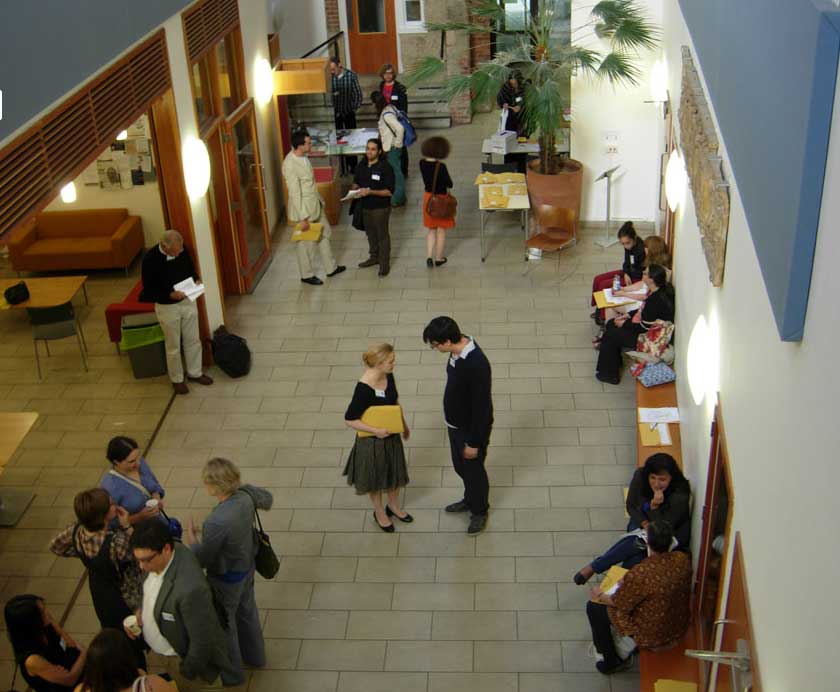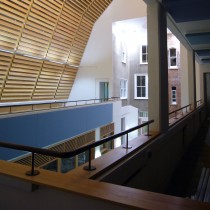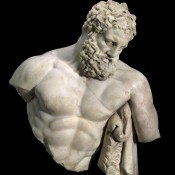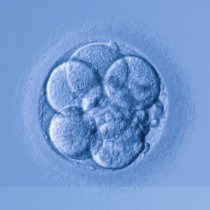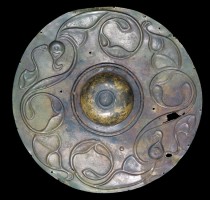The 5th International Workshop on the Archaeology of Roman Construction entitled “Man-made materials, engineering and infrastructure” will take place at the University of Oxford (Ioannou Centre for Classical and Byzantine Studies, Oxford), on 11-12 April 2015.
1st Circular: CALL FOR PAPERS
The international workshops on the Archaeology of Construction, originating in the series organised by the Archaeological Institute of Merida (2007), the University of Siena (2008), and the École Normale Supérieure of Paris (2010), and continued at the University of Padua in 2012, has confirmed the existence of a strong interest in the constructional aspects of Roman architecture. All the previous conferences have already been published in the international series Anejos de Archivo Español de Arqueología, and it is hoped to publish this one in the same series.
The archaeology of construction is the study of the processes involved in historical construction projects, covering the production and supply of materials, the techniques used in construction, the problems of logistics, manpower, and economics. This is a relatively new discipline within the field of Roman construction, which has been given impetus by an active group of international researchers who organised the first workshops. These focused on building site processes in Italy and the Roman provinces (west and east), and on quarrying and supply of building stone. The archaeology of construction is complementary to the more traditional areas of the study of Roman architecture, such as building typologies and use, design and decoration, or the function of the finished buildings in society. Instead it concentrates on the formative process of architecture, with a strong emphasis on technology, construction economics and logistics. In that way it contributes much to ongoing debates about the size and shape of Roman urban economies.
The broad focus of this workshop will be on the development of specific technologies for solving constructional or structural problems, including the production and supply of man-made materials, the contribution of engineering and machines to the functioning of building sites, and the nature and division of labour these require. Papers which present new approaches, new archaeological data, and new interpretations will be particularly welcome. While previous workshops have largely been focused on the city of Rome and the Mediterranean provinces, the present organisers encourage contributions regarding the North-Western provinces, which are under-represented in the current literature.
Four sessions are planned:
Session 1; man-made materials 1: production and supply
Session 2; man-made materials 2: transport and deployment
Session 3; engineering, machines and infrastructure 1: engineering and machines
Session 4; engineering, machines and infrastructure 2: organisation of the building
site
Sessions 1 and 2: Man-made materials
Alongside the naturally occurring materials of stone, timber, mud-brick and thatch, Roman builders used a wide variety of materials that had to go through one or more sequences of processing, usually at a separate production site or more rarely, for example in the case of mortar, on site. The supply of bulk materials such as brick and lime are key in the logistics of site construction, while speciality products such as metal elements usually represent bespoke solutions to specific structural and constructional problems. Man-made materials also often required high levels of skilled manpower and specialised equipment or plant in their processing, thus contributing substantially to the cost of construction. The main materials to be considered will be ceramic elements (brick, tile, wall tubes, vaulting tubes etc), lime and mortar, metal and glass. Possible
areas the sessions will examine include:
-the relation between building projects and the production of man-made
materials
-the nature and distribution of the natural resources and places of
production
-the organisation of production
-the degree of standardization and of variation in man-made building
materials
-transport routes and logistics
-the deployment and/or on site production of man-made materials in
building projects
-innovations in the production and use of man-made materials
Sessions 3 and 4: Engineering, machines and the organisation of the labour
force
The Romans have long been admired for their engineering skills, but this is
an area which has so far attracted relatively little interest within the archaeology of construction. Yet large-scale construction is not possible without the use of complex lifting machines, or devices such as the truss, used in supporting large formwork. Equally, modern structural and mechanical analysis can help throw light on construction processes and the choices made by builders and architects. The investigation of machines, especially lifting machines essential for large-scale construction, are also under-researched in relation to construction processes. These are only one example of the temporary works necessary for construction to take place, which also include for example scaffolding and formwork. All of these require specialised equipment and skills, and have an impact on the
scheduling of work and the division of labour, which forms another area of interest to this workshop. Possible areas the sessions will examine include:
-structural analysis as an investigative tool for understanding
construction
-evidence for and use of lifting (and other) machines in the construction
process
-innovations in structural solutions, e.g. the use of the truss
-nature and use of temporary works (e.g. scaffolding and formwork) in the
construction process, and the supply of materials for them
-infrastructure specialisms in the construction workforce
-the division of labour on construction sites
-other aspects of the technology of building sites
The closing deadline for proposed papers is 31 December 2014. Abstracts, with a title, of no more than 500 words or 1 page (12 point, single-spaced) should be sent to the Secretary by that date. They will also be used for the book of abstracts for the workshop. If possible, abstracts should be in English, or an English summary provided for the book of abstracts. The programme has space for a maximum of 20 papers, so please indicate if you would be willing to present your paper as a poster if it cannot be fitted into the schedule of presentations.
Accommodation will be provided for speakers, but only for a single speaker in the case of multiple authors of a paper. There will be a small conference fee (£25) for non-contributors.
Workshop Secretary
Alejandra Albuerne
Department of Engineering Science
University of Oxford
[email protected].
Organising Committee
Janet DeLaine
Faculty of Classics/School of Archaeology
University of Oxford
[email protected].
